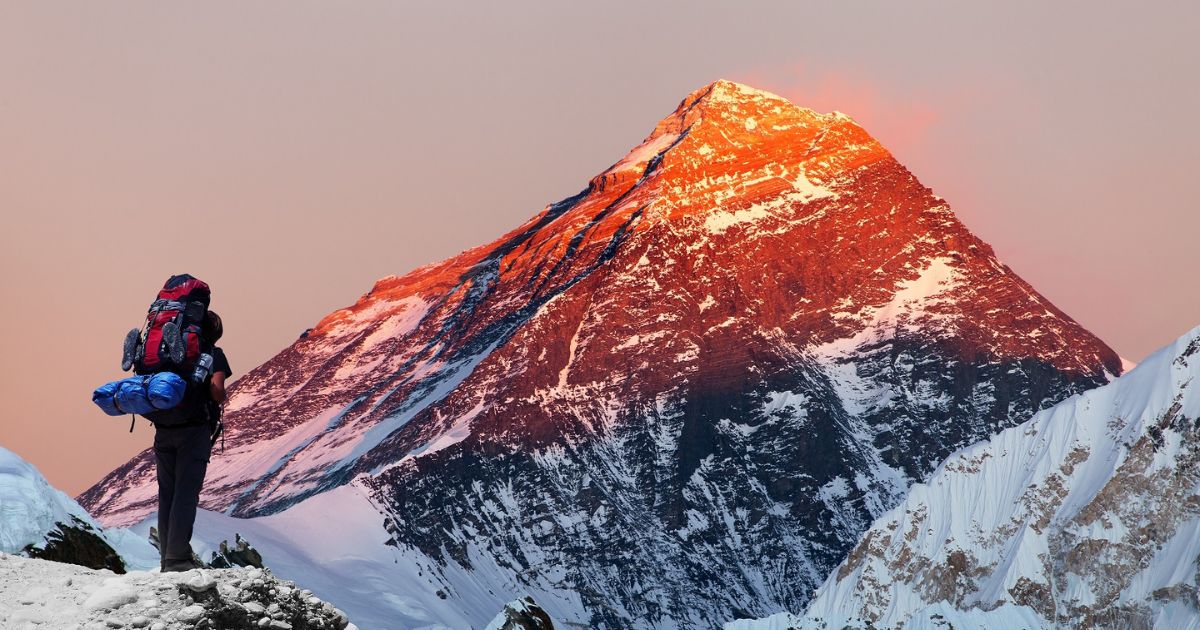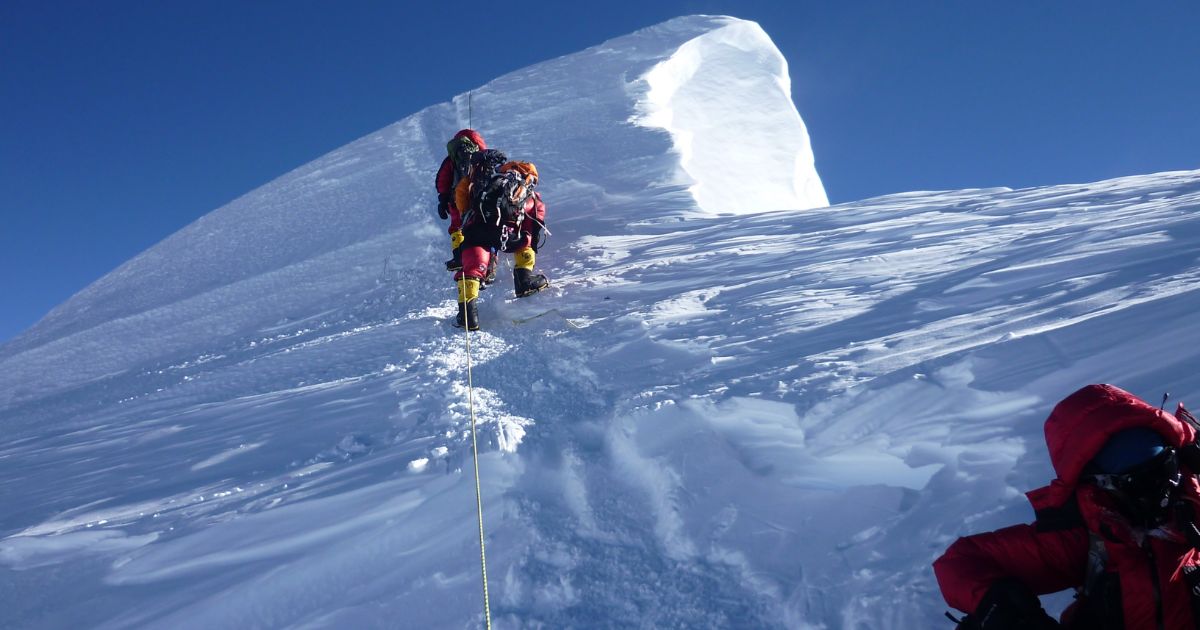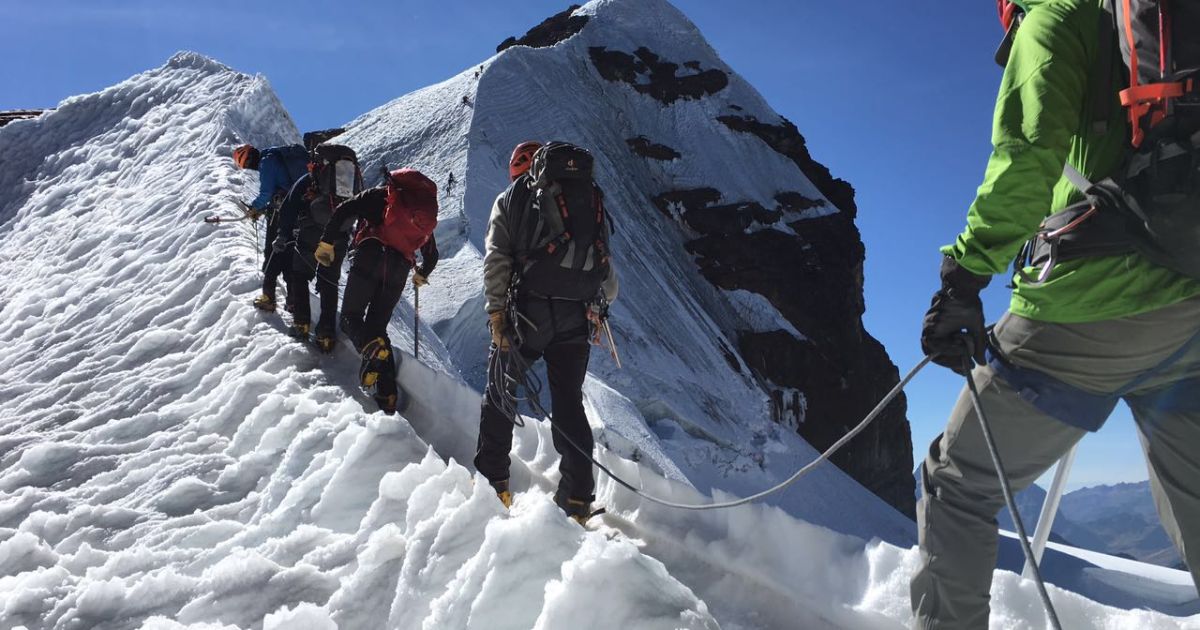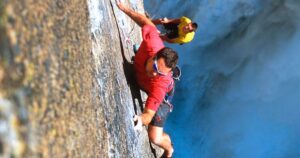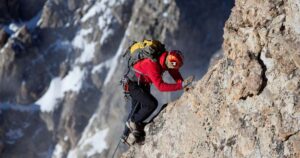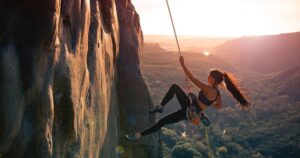Climbing Mount Everest, the world’s highest peak, is a remarkable feat that requires meticulous planning, physical endurance, and mental fortitude. For those aspiring to conquer this formidable mountain, an essential question often arises: How many days does it take to climb Mount Everest? Understanding the duration of such an expedition is crucial for proper preparation and goal-setting.
In this article, we will explore the typical duration of climbing Mount Everest, taking into account various factors that influence the climbing time. From acclimatization to weather challenges and route selection, we will delve into the complexities of this arduous journey. Additionally, we will examine the significance of adequate training and preparation, as well as highlight notable expeditions that have achieved record-breaking ascents. So, if you are seeking answers and insights into the timeline of conquering Mount Everest, join us as we embark on this enlightening exploration.
Key Takeaways
- Climbing time usually ranges from 50 to 60 days.
- Acclimatization is crucial to minimize the risk of altitude sickness and increases the chances of a successful summit.
- Unpredictable weather poses significant challenges and increases the risk and uncertainty of climbing Mount Everest.
- The duration of the expedition depends on the chosen route, with the Southeast Ridge route taking around 60 days and more challenging routes taking up to 70 days.
The Typical Duration for Climbing Mount Everest
The typical duration for climbing Mount Everest usually ranges from 50 to 60 days, depending on various factors such as weather conditions and individual fitness levels. This long climbing time is primarily due to the need for acclimatization and the unpredictable nature of the mountain. Before attempting the summit, climbers spend several weeks on the mountain, gradually ascending and descending to allow their bodies to adjust to the high altitude.
This process helps to prevent altitude sickness and increases the chances of a successful summit. Additionally, climbers must also take into account the weather conditions, as strong winds, heavy snowfall, and low temperatures can significantly impact the climbing schedule. Therefore, it is crucial for climbers to plan for a longer duration to ensure their safety and maximize their chances of reaching the summit. Furthermore, developing and maintaining grip strength for rock climbing is paramount, as it plays a vital role in navigating challenging terrains and ensuring a secure ascent.
Factors Affecting the Climbing Time of Mount Everest
Factors such as weather conditions, physical fitness, and acclimatization play a significant role in determining the climbing time of Mount Everest. Weather conditions on the mountain can be extremely harsh and unpredictable, with strong winds, heavy snowfall, and extreme cold temperatures. These conditions can slow down climbers and make progress difficult, thereby increasing the overall climbing time.
Additionally, physical fitness is crucial for climbers attempting to summit Mount Everest. The mountain’s high altitude and steep slopes require a high level of endurance, strength, and cardiovascular fitness. Climbers who are physically fit are able to maintain a faster climbing speed and recover more quickly from the physical demands of the climb. Therefore, physical fitness directly affects the overall climbing time of Mount Everest.
The Role of Acclimatization in Summiting Mount Everest
Acclimatization plays a crucial role in summiting Mount Everest by allowing climbers to adapt to the extreme altitude and reduce the risk of altitude sickness. Gradual ascent is essential to give the body enough time to adjust to the decreasing oxygen levels. Various strategies, such as climbing high and sleeping low, are employed to aid acclimatization and increase the chances of a successful summit.
Acclimatization and Altitude Sickness
During the ascent of Mount Everest, climbers must undergo a crucial process of adjusting to high altitudes, known as acclimatization, in order to minimize the risk of altitude sickness. Altitude sickness, also known as acute mountain sickness (AMS), occurs when climbers ascend too quickly and their bodies are unable to adapt to the thin air and low oxygen levels. To prevent altitude sickness, climbers undergo a period of acclimatization where they gradually ascend to higher altitudes, allowing their bodies to adjust to the reduced oxygen levels.
This process involves spending several days at intermediate camps, allowing the body to produce more red blood cells to carry oxygen more efficiently. Additionally, high-altitude training before the climb can help prepare climbers for the challenges they will face on Mount Everest, improving their overall physical fitness and ability to cope with extreme conditions. Acclimatization and altitude sickness prevention are crucial elements in the successful summiting of Mount Everest, ensuring the safety and well-being of climbers.
Importance of Gradual Ascent
Climbers on Mount Everest must prioritize a gradual ascent to allow for proper acclimatization, essential for a successful summit. The extreme altitude and harsh conditions of Everest pose significant challenges to the human body. Rapid ascent can lead to altitude sickness, a potentially life-threatening condition caused by the body’s inability to adapt to the thin air and low oxygen levels.
To mitigate these risks, climbers use various acclimatization strategies. These strategies involve spending time at intermediate camps, allowing the body to gradually adjust to the altitude. Climbers climb up to higher camps and then descend to lower camps, repeating this process multiple times. This gradual ascent and descent help stimulate the production of more red blood cells, improving oxygen-carrying capacity and reducing the risk of altitude sickness. Acclimatization is a crucial aspect of climbing Mount Everest and should not be rushed or overlooked.
Strategies for Acclimatization
One key aspect of successfully summiting Mount Everest is implementing effective strategies for acclimatization. These strategies are essential for allowing the body to adjust to the high altitude and thin air, reducing the risk of altitude sickness and increasing the chances of reaching the summit. Here are four important strategies for acclimatization:
- Gradual ascent: Climbing slowly and taking regular rest days at higher altitudes allows the body to adapt gradually to the decreasing oxygen levels.
- Hydration: Drinking plenty of fluids helps prevent dehydration, which can worsen the effects of altitude sickness.
- High-altitude nutrition: Consuming a diet rich in carbohydrates and proteins provides the necessary energy and nutrients for the body to function optimally at high altitudes.
- Proper rest: Getting enough sleep and allowing the body to recover is crucial for acclimatization and maintaining physical strength throughout the climb.
Weather Challenges and Their Impact on Climbing Mount Everest
Climbing Mount Everest is not only a physical challenge but also a battle against unpredictable and harsh weather conditions. Deadly avalanches and storms pose significant threats to climbers, making it essential for them to carefully plan their ascent and be prepared for sudden changes in weather. Additionally, the scarcity of oxygen at high altitudes further adds to the difficulty, requiring climbers to acclimatize and rely on supplemental oxygen. Furthermore, the treacherous icefall dangers and hidden crevasses make the climb even more perilous, demanding utmost caution and skill from mountaineers.
Deadly Avalanches and Storms
The impact of deadly avalanches and storms on the ascent of Mount Everest cannot be underestimated. Climbing Mount Everest is already a challenging endeavor, but when extreme weather conditions come into play, the risks become even greater. Here are some key points to consider:
- Unpredictable weather: The weather on Mount Everest can change rapidly, with high winds, snowstorms, and blizzards occurring without warning.
- Deadly avalanches: The steep slopes and massive amounts of snow make Mount Everest prone to avalanches. These can be triggered by heavy snowfall, earthquakes, or even climbers themselves.
- Limited visibility: Storms can reduce visibility to near zero, making it impossible to navigate safely. This can lead to climbers getting lost or falling into crevasses.
- Frostbite and hypothermia: Extreme cold temperatures and wind chill can cause frostbite and hypothermia, both of which can be life-threatening.
It is crucial for climbers to be well-prepared, have proper equipment, and closely monitor weather conditions to minimize the risks associated with these deadly avalanches and storms.
Oxygen Scarcity at Altitude
Oxygen scarcity at altitude poses significant challenges for climbers on Mount Everest, particularly in relation to weather conditions. As climbers ascend higher, the air becomes thinner, making it harder to breathe and increasing the risk of altitude-related health risks. Oxygen supplementation is often necessary to combat the effects of reduced oxygen levels. To illustrate the impact of altitude on oxygen levels, consider the following table:
| Altitude (meters) | Oxygen Level (% of sea level) |
|---|---|
| Base Camp | 50% |
| Camp 2 | 40% |
| Camp 4 | 30% |
| Summit | 33% |
As the table demonstrates, oxygen levels decrease significantly as climbers progress towards the summit, making it crucial to have supplemental oxygen to prevent altitude sickness and other health complications. Understanding these challenges is essential for climbers attempting to conquer Mount Everest. With the knowledge of oxygen scarcity, climbers can prepare themselves for the subsequent section about icefall dangers and crevasses.
Icefall Dangers and Crevasses
Navigating through the treacherous icefall dangers and treacherous crevasses is a formidable challenge for climbers attempting to conquer Mount Everest. The icefall risks and glacier hazards pose significant threats to their safety and make the climb even more daunting. Here are some key points to understand about these dangers:
- Icefall risks: The Khumbu Icefall, located at the base of Mount Everest, is known for its unstable ice towers and seracs. These massive chunks of ice can collapse at any time, making it essential for climbers to move quickly through this perilous section.
- Crevasses: These deep cracks in the glacier can be hidden beneath layers of snow, making them difficult to spot. Falling into a crevasse can have catastrophic consequences, as climbers can become trapped or even fall to their deaths.
- Weather challenges: Extreme weather conditions, such as blizzards and high winds, can make the icefall risks and crevasses even more treacherous. Climbers must be prepared for sudden changes in weather and adjust their plans accordingly.
- Impact on climbing: The presence of icefall dangers and crevasses significantly increases the risk and uncertainty of climbing Mount Everest. Climbers must exercise caution, use proper equipment, and rely on experienced guides to navigate these hazards safely.
Conquering Mount Everest is a feat that demands respect for the icefall dangers and crevasses that climbers must face. Understanding these risks is crucial for anyone attempting to reach the summit.
Routes and Their Influence on the Duration of the Expedition
Different routes on Mount Everest can significantly impact the duration of the expedition, with expeditions typically taking anywhere from 40 to 70 days to complete. The choice of route depends on various factors, including the climbers’ experience, climbing techniques, and the level of Sherpa support available. The most popular route is the Southeast Ridge from Nepal, which offers a well-established path with fixed ropes and camps.
This route generally takes around 60 days to complete. On the other hand, the North Col route from Tibet is less crowded but requires more technical climbing skills and takes around 40-50 days. Other routes, such as the West Ridge and the South Col, are even more challenging and time-consuming, often taking up to 70 days. The choice of route is crucial in determining the duration of the expedition and should be carefully considered during the planning phase. Transitioning into the next section, proper training, and preparation are of utmost importance to successfully tackle these demanding routes.
The Importance of Proper Training and Preparation for Everest
Proper training and preparation are essential for climbers to successfully tackle the demanding routes of Mount Everest. The following are key considerations for those planning to conquer the world’s highest peak:
- Physical Fitness: Climbing Everest requires immense physical strength and endurance. Regular aerobic exercises such as running, cycling, and hiking can help improve cardiovascular fitness. Strength training, focusing on core and leg muscles, is also crucial for carrying heavy loads and navigating challenging terrain.
- Altitude Acclimatization: Spending time at higher altitudes is vital for climbers to adjust to the thin air and reduced oxygen levels. Gradually ascending and allowing the body to adapt to the altitude helps minimize the risk of altitude sickness.
- Technical Skills: Climbers must be proficient in various mountaineering techniques, including rope handling, ice climbing, and glacier travel. Training in these skills is essential to navigate the technical sections of the Everest routes.
- Proper Nutrition: Maintaining a well-balanced diet is crucial for climbers to fuel their bodies and maintain energy levels throughout the expedition. Consuming enough calories, complex carbohydrates, proteins, and healthy fats is necessary to sustain the physical demands of climbing.
Notable Expeditions and Their Record-Breaking Ascents
Throughout history, numerous expeditions have successfully summited Mount Everest, some even achieving record-breaking ascents. One of the most notable record-breaking expeditions was led by Sir Edmund Hillary and Tenzing Norgay in 1953. They became the first climbers to reach the summit of Everest, marking a historic moment in mountaineering.
Another famous record-breaking ascent was accomplished by Reinhold Messner and Peter Habeler in 1978. They were the first to summit Everest without supplemental oxygen, a feat considered impossible at the time. In 1996, Anatoli Boukreev and Gheorghe Dijmarescu set a new record by reaching the summit in just 16 hours and 56 minutes from Camp IV. These record-breaking expeditions and the achievements of famous climbers have inspired countless others to pursue their own dreams of conquering the world’s highest peak.
Frequently Asked Questions
What Is the Cost of Climbing Mount Everest?
The cost of climbing Mount Everest can vary depending on several factors, including the cost of permits, equipment expenses, and support services. It is important to carefully plan and budget for these expenses to ensure a successful and safe expedition.
Are There Any Age Restrictions for Climbing Mount Everest?
Age restrictions and training requirements are important considerations for those seeking to climb Mount Everest. Understanding the physical demands and having the necessary skills and experience are crucial factors in ensuring a safe and successful ascent.
What Kind of Physical Fitness Is Required to Climb Mount Everest?
Physical training and altitude acclimatization are crucial for climbers attempting to summit Mount Everest. The rigorous demands of the climb require excellent cardiovascular fitness, strength, endurance, and mental resilience. Proper preparation is essential for a successful and safe ascent.
How Many People Have Died While Climbing Mount Everest?
An exploration into the mountaineering history of Mount Everest reveals a sobering reality: numerous fatalities have occurred during attempts to conquer its summit. Mount Everest climbing statistics provide insight into the challenges and risks faced by climbers.
Are There Any Rescue Services Available on Mount Everest?
Rescue services play a crucial role in ensuring the safety of climbers on Mount Everest. These services are equipped with skilled professionals, advanced equipment, and well-coordinated procedures to swiftly respond to emergencies and mitigate risks on the mountain.
Conclusion
In conclusion, climbing Mount Everest is a challenging and time-consuming endeavor. Factors such as acclimatization, weather conditions, and chosen routes greatly influence the duration of the expedition. Proper training and preparation are crucial for success. Notable expeditions and their record-breaking achievements inspire awe and admiration. Just as each step on Everest requires determination and perseverance, the journey towards any goal in life demands the same unwavering commitment. Like scaling the world’s highest peak, success often lies in the ability to persist and overcome obstacles along the way.
